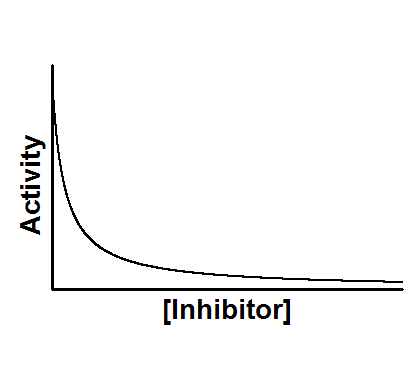Introduction
This equation accounts for tight binding, so it does not assume that the free concentration of inhibitor equals the total concentration.
Step by step
Create an XY data table. Enter inhibitor concentration into the X column (usually in micromolar, but any concentration units is fine), and enzyme activity into the Y columns (any units). If you have several experimental conditions, place the first into column A, the second into column B, etc.
After entering data, click Analyze, choose nonlinear regression, choose the panel of enzyme kinetics equations, and choose Morrison Ki.
Constrain Et, S and Km to constant values
You must constrain three parameters to constant values. To constrain the values, go to the Constrain tab of the nonlinear regression dialog, make sure that the drop down next to Et, S and Km is set to "Constant equal to" and enter the values.
•Et is the concentration of enzyme catalytic sites in the same units as the X values. If the enzyme has multiple subunits, note that Et is the concentration of catalytic sites, which can be larger than the concentration of enzyme molecules.
•S is the concentration of substrate you chose to use. Use the same units as the X values.
•Km is the Michaelis-Menten constant, expressed in the same units as X, determined in an experiment without competitor.
Prism cannot fit any of these parameters from the graph of activity vs inhibitor concentration. You must know S from your experimental design, determine Km and Et in other experiments, and constrain all three to constant values.
Model
Q=(Ki*(1+(S/Km)))
Y=Vo*(1-((((Et+X+Q)-(((Et+X+Q)^2)-4*Et*X)^0.5))/(2*Et)))
Interpreting parameters
V0 is the enzyme velocity in the absence of inhibitor, expressed in the same units as Y. This is not the same as Vmax,which would require a maximal concentration of substrate.
Ki is the inhibition constant, expressed in the same units as X.
The IC50 is not the same as the Ki (Kusmic). Instead, IC50 = Et/2 + Ki
Reference
Equation 9.6, in RA Copeland, Enzymes, 2nd edition, Wiley, 2000.
Petr Kuzmic, Why IC50s are bad for you and other surprises
